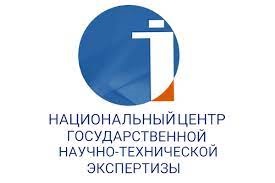On the Transcription of Kazakh Oral Text
https://doi.org/10.55491/2411-6076-2025-2-28-37
Abstract
The article examines the concept of transcription, its types and the use of transcription in oral speech. In scientific literature, transcription is presented as a transmission in writing by a particular set of written signs for the precise designation of elements of spoken speech (phonemes, allophones) of a certain language. The peculiarities of phonetic processes in sound discourse are determined by the high degree of variability of sound phenomena. Sound shells of significant units in the process of speech production are subject to change due to the general weakening of articulation, reduction of vowels, loss of consonants, assimilation, voicing or devoicing of a consonant under the influence of neighboring sounds, an increase or decrease in the rate of speech, intensity and duration. Phonetic and phonological transcription is used to accurately record changes in sounds in the flow of speech. Transcription is not just a language tool, it is a bridge that connects people across languages and cultures. With the advancement of technology, this method is breaking down language barriers, offering unprecedented accuracy in understanding human speech. Transcription is an accurate method of recording spoken language that captures the true pronunciation of words using special symbols to represent specific sounds. In oral speech, prosodic transcription is used to determine the place of logical stress, the divergence of syntactic and prosodic means, the division of the speech sequence, temporal characteristics such as the length of pauses, the presence of hesitation pauses, the duration of speech segments, and melodic patterns. Thus, phonetic, phonological and prosodic transcriptions are used to describe the segmental-prosodic characteristics of oral speech.
Keywords
About the Authors
Z. BazarbayevaKazakhstan
Zeynep Bazarbayeva, Doctor of Philology, Professor, Academician
Almaty
D. Sadyk
Kazakhstan
Didar Sadyk, Doctoral student
Almaty
N. Ospangaziyeva
Kazakhstan
Nazgul Ospangaziyeva
Almaty
References
1. Amanbayeva, A., Zhumabayeva, Zh. (2023) Oral prosodic corpus: phonetic-phonological and intonational transcription of the text. Tiltanym. No 2. P. 32-38 (in English)
2. Aralbaev, Z.A. (1988) Qazaq fonetikasy boiynsha jetjudter. Almaty: Gylym, 144 b. [Aralbayev, Z.A. (1988) Etudes on Kazakh phonetics. Almaty: Gylym, 144 p.] (in Kazakh)
3. Bazarbaeva, Z.M. (2008) Qazaq tili: intonologija, fonologija. Almaty: Zhibek zholy, 326 b. [Bazarbayeva, Z.M. (2008) Kazakh language: intonology, phonology. Almaty: Zhibek zholy, 2008. 326 p.] (in Kazakh)
4. Bazarbayeva, Z.M., Zharkynbekova, S.Z., Amanbayeva, A.Zh., Zhumabayeva, Zh.T., Karshygayeva, A.A. (2023) The National Corpus of Kazakh Language: Development of Phonetic and Prosodic Markers. Journal of Siberian Federal University. Humanities & Social Sciences. 16(8). P. 1256–1270 (in English)
5. Bell, A.M. (1894) Sounds and their relations. Washington (in English)
6. Kibrik, A.A., Korotaev, N.A., Podlesskaya, V.I. (2020) Russian spoken discourse: Local structure and prosody. In search for a basic unit of spoken language: A corpus-driven approach. H. Mello, T. Raso, A. Panunzi (eds.). Amsterdam. P. 35-76 (in English)
7. Kibrik, A.A., Maisak, T.A. (2021) Rules of discursive transcription for descriptive and documentary research // Linguistics, Rhema. Rema. No. 2. (in English)
8. Qazaq tilining orfojepijalyq anyqtagyshy (2004) Almaty: Arys, 200 b. [Orthographic guide of the Kazakh language (2004) Almaty: Arys, 200 p.] (in Kazakh)
9. Samarin, D.A. (2020) Relevance of V. A. Bogoroditsky's phonetic transcription model for modern linguistics // Philological sciences. Theoretical and practical issues. Issue 12-1 (in English) Saussure, F. (1977) Cours de linguistique générale. Paris (in French)
10. Shherba, L.V. (1974) Jazykovaja sistema i rechevaja dejatel`nost`. Leningrad: Nauka, 428 s. [Shhcherba, L.V. (1974)
11. Language system and speech activity. Leningrad: Nauka, 428 p.] (in Russian)
12. Superanskaya, A.V. (2018) Theoretical foundations of practical transcription / Ed. A.A. Reformatsky. 2nd ed. Moscow: LENAND, 288 p. (in English)
13. Sweet, H.A. (2009) Primer of Phonetics. Hardcover. (in English)
14. Tannen, et al., (2015) The Handbook of discourse analysis. Second Edition. Vol. 1, 2. Tannen, D., Hamilton, H.E., Schiffrin, D. (eds.). Chichester. (in English) Zinder, L.R. (1979) Obshhaja fonetika. Моskva: Vysshaja shkola, 312 s. [Zinder, L.R. (1979) General phonetics. Moscow: Vysshaya shkola, 312 p.] (in Russian)
Review
For citations:
Bazarbayeva Z., Sadyk D., Ospangaziyeva N. On the Transcription of Kazakh Oral Text. Tiltanym. 2025;(2):28-37. (In Kazakh) https://doi.org/10.55491/2411-6076-2025-2-28-37

















